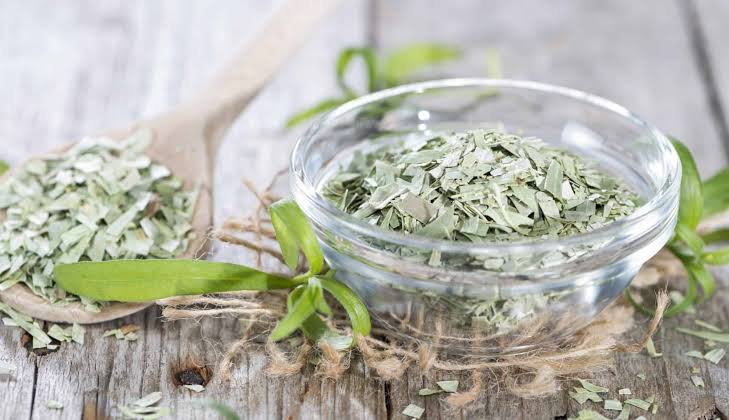Tarragon spice is a special herb that adds flavor to food. It is green and leafy. People like to use it because it makes their meals taste better. Let’s learn more about tarragon spice. Tarragon spice comes from a plant. This plant has long, thin leaves that are green. The leaves look a bit like grass. When you smell tarragon spice, it has a nice scent. Some people say it smells a bit like licorice candy.
People have been using tarragon spice for a long time. It’s not new; it’s old! In the olden days, people used it to make their food taste good. They would put tarragon spice on meat, like chicken or fish. It made the food yummy.
Tarragon spice is also used in something called “French cuisine.” French cuisine is food from France, a country in Europe. French chefs like to use tarragon spice to make their dishes taste fancy. They put it in sauces and salads.
Do you know what’s nice about tarragon spice? It’s not just yummy; it can also be good for you. Some people believe it can help with things like digestion. That means it can help your tummy feel better after eating.
Tarragon spice is easy to use. You don’t need to be a fancy chef to use it. You can chop up the leaves and sprinkle them on your food. Or, you can mix it with some oil and make a tasty dressing for your salad. It’s simple!
If you want to keep tarragon spice fresh, you can plant it in your garden. You just need some soil, water, and sunlight. Then, you can pick the leaves whenever you want to use them in your cooking.
In addition, tarragon spice is a green and leafy herb that makes food taste good. People have been using it for a long time, especially in French cuisine. It smells nice, and some say it’s good for digestion. It’s easy to use and can even grow in your garden.
Read Also: Feeding and Grazing Behaviour of Goats
12 Health Benefits of Tarragon Spice
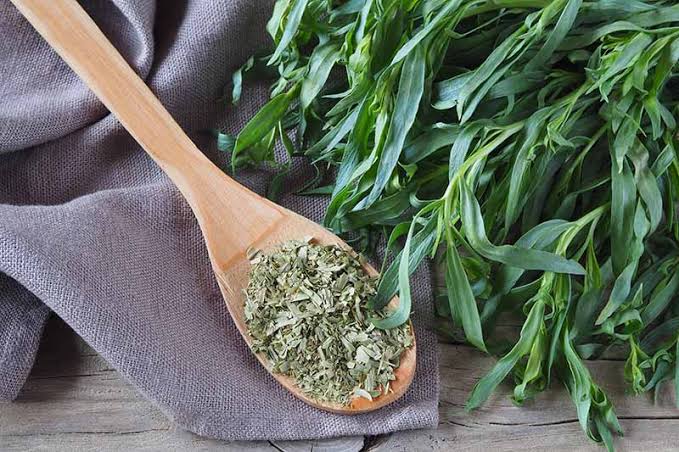
Tarragon spice is not just about adding delicious flavor to your dishes, it also offers various health benefits. Here are 12 (Twelve) of these health benefits:
1. Digestive Aid: Tarragon spice can help improve digestion by stimulating the production of digestive juices, which can ease discomfort after meals.
2. Antioxidant Properties: It contains antioxidants that may help protect your cells from damage caused by harmful molecules called free radicals.
3. Anti-Inflammatory: Tarragon spice has anti-inflammatory properties that may help reduce inflammation in the body.
4. Rich in Nutrients: It’s a good source of essential vitamins and minerals like vitamin C, vitamin A, and potassium, which are important for overall health.
5. Improved Appetite: Tarragon spice can stimulate your appetite, making it useful for individuals who struggle to eat enough.
6. Aid for Sleep: Some people believe that tarragon can help improve sleep quality and reduce insomnia symptoms.
7. Weight Management: Its ability to boost appetite can be beneficial for people who need to gain weight, while its low-calorie content can be helpful for those trying to manage their weight.
8. Diabetes Management: Some studies suggest that tarragon spice may help regulate blood sugar levels, which can be beneficial for individuals with diabetes.
9. Cough Relief: Tarragon can be used as a natural remedy to soothe coughs and respiratory discomfort.
10. Antibacterial Effects: It has antibacterial properties that may help fight off harmful bacteria in the body.
11. Menstrual Pain Relief: Some women find relief from menstrual cramps and discomfort by consuming tarragon spice.
12. Mood Enhancement: Tarragon may have mood-enhancing effects, potentially reducing symptoms of anxiety and stress.
Remember, while tarragon spice offers these potential health benefits, it’s essential to use it in moderation and as part of a balanced diet. If you have specific health concerns or conditions, it’s always a good idea to consult with a healthcare professional before making significant changes to your diet or lifestyle.
Mesquite Seasoning
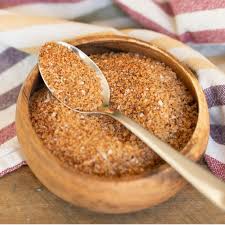
Mesquite Seasoning is a special kind of spice mix that can make your food taste amazing. It’s made from the mesquite tree, which is found in some hot and dry places. People use mesquite seasoning to add flavor to their food, especially when they are cooking outdoors on a barbecue or grill.
What makes mesquite seasoning so good is the unique taste it brings. It’s a bit smoky and a bit sweet, like a cozy campfire on a cool night. When you sprinkle mesquite seasoning on your meat or vegetables, it gives them a delicious, savory flavor that’s hard to resist.
You can use mesquite seasoning on many things. Burgers taste better with a little sprinkle of it, and so do chicken and fish. If you’re a vegetarian, don’t worry – mesquite seasoning can make your grilled vegetables taste fantastic too.
One of the great things about mesquite seasoning is that it’s easy to use. Just shake it onto your food before or while you cook it. You don’t need to be a fancy chef to make your meals taste great with mesquite seasoning. It’s like a secret ingredient that turns ordinary meals into something special.
Not only does mesquite seasoning make your food taste better, but it also makes it look better. The seasoning adds a nice brown color to your meat, giving it that perfect grilled appearance. So, not only will your taste buds be happy, but your eyes will be too.
But remember, a little goes a long way with mesquite seasoning. You don’t want to use too much, or it might become too strong. Start with a small sprinkle, and if you want more flavor, you can always add a little extra later.
In addition, Mesquite Seasoning is like a magic dust for your food. It’s easy to use, adds incredible flavor, and makes your meals look amazing. Whether you’re grilling in your backyard or having a picnic in the park, don’t forget to bring your mesquite seasoning along – it’s the key to turning ordinary meals into extraordinary ones. So, go ahead, give it a try, and enjoy the tasty, smoky goodness of mesquite seasoning on your next meal.
Read Also: Practical Feeding Guide for Goat Production
Comino Spice
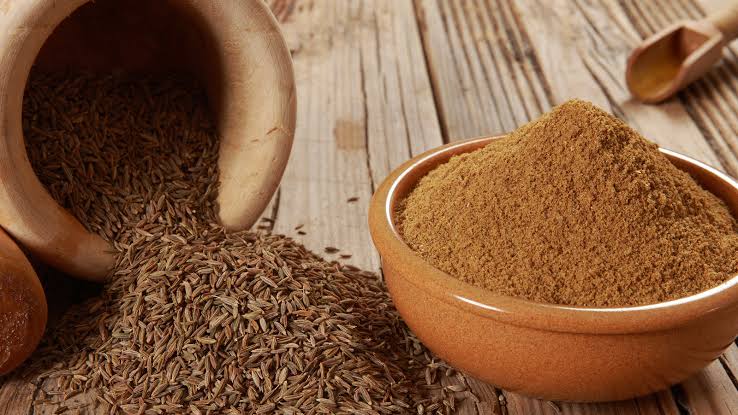
Comino spice, also known as cumin, is a popular and aromatic spice that adds a distinctive flavor to many dishes. It comes from the seeds of the cumin plant and has been used in cooking for centuries.
Comino spice, or cumin, is a brownish spice with a warm and earthy flavor. It’s commonly used in cooking to add a delightful taste to various dishes. The taste of comino spice is somewhat nutty and peppery, making it a versatile ingredient that can be used in both savory and sometimes even in some sweet recipes.
People use comino spice in many different cuisines around the world. It’s a staple in Mexican, Indian, Middle Eastern, and Mediterranean cooking. You’ll find it in dishes like tacos, curries, falafel, and chili. It’s also a key ingredient in many spice blends, like curry powder and taco seasoning.
To use comino spice, you can either toast the seeds before grinding them or use pre-ground cumin powder. Both forms will add that lovely flavor to your food. Just a small amount of comino spice can go a long way, so use it sparingly at first and adjust to your taste.
In addition, comino spice, or cumin, is a flavorful spice that’s widely used in cooking worldwide. Its warm and nutty taste can enhance the flavor of a wide range of dishes, making it a must-have in many kitchens. Whether you’re making a spicy curry or a simple taco, comino spice can elevate your culinary creations with its delicious and aromatic touch.
Asian Seasoning
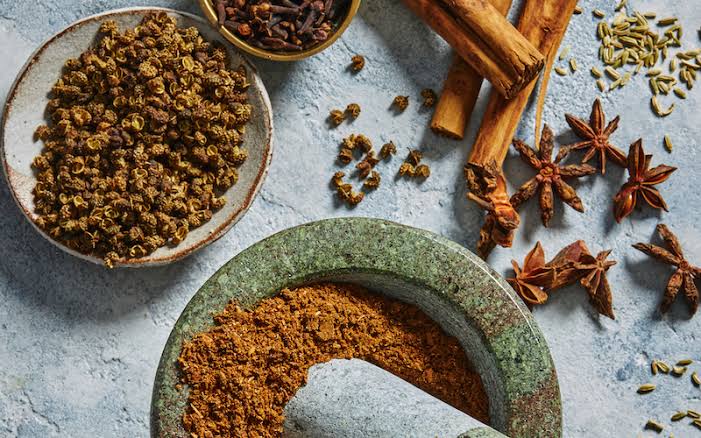
Asian seasoning refers to a wide variety of spices, herbs, and flavorings commonly used in Asian cuisine to create delicious and diverse flavors. Asian seasoning can vary greatly depending on the region, but below are some common elements you might find in Asian cooking:
1. Soy Sauce: Soy sauce is a staple in many Asian dishes, providing a salty and savory flavor. There are various types, including light and dark soy sauce, each with a unique taste.
2. Ginger: Fresh or ground ginger adds a zesty and slightly spicy kick to dishes. It’s used in stir-fries, soups, and marinades.
3. Garlic: Garlic is a versatile ingredient in Asian cooking, offering a pungent and savory flavor. It’s often used minced or sliced.
4. Sesame Oil: Toasted sesame oil is used to add a rich, nutty aroma to dishes, often drizzled on just before serving rather than as a cooking oil.
5. Chili Paste: Various types of chili paste or sauce are used to add heat and flavor to dishes. Sriracha, sambal, and gochujang are examples.
6. Fish Sauce: A pungent and salty condiment made from fermented fish, fish sauce is used to season and flavor many Southeast Asian dishes.
7. Lemongrass: Lemongrass offers a citrusy, herbal note to dishes and is commonly used in Thai and Vietnamese cuisines.
8. Star Anise: This spice imparts a sweet and licorice-like flavor and is used in many Asian soups and braised dishes.
9. Coriander (Cilantro): Both the leaves (cilantro) and seeds (coriander) are used in Asian cooking. They provide a fresh, citrusy flavor.
10. Five-Spice Powder: This Chinese spice blend typically includes star anise, cloves, Chinese cinnamon, Sichuan peppercorns, and fennel seeds. It’s used in various dishes for a complex and aromatic flavor.
11. Curry Powder: Commonly used in Indian and Southeast Asian cuisine, curry powder is a mix of spices that can include coriander, cumin, turmeric, and more. It provides a warm and spicy flavor.
12. Rice Vinegar: Used in Asian sauces, marinades, and dressings, rice vinegar adds a mild, slightly sweet acidity.
13. Shiitake Mushrooms: Dried or fresh, shiitake mushrooms add a rich umami flavor to dishes, often used in soups and stir-fries.
These are just a few examples of the wide array of seasonings and spices used in Asian cooking. The combination of these ingredients can create a diverse and flavorful range of dishes, from the fiery curries of India to the delicate, umami-rich broths of Japan.
Read Also: Exploring Profitable Waste Management Business Ideas

